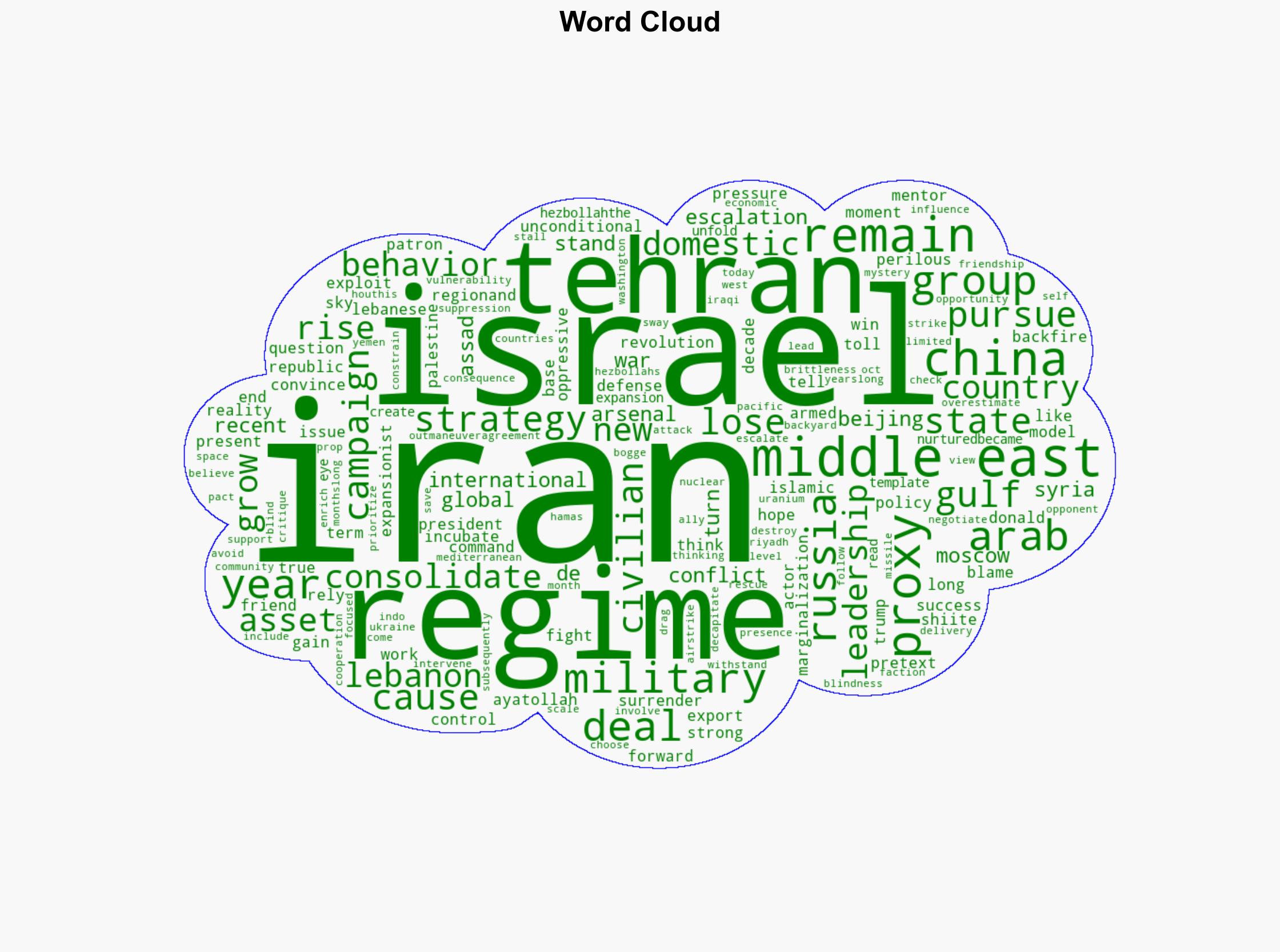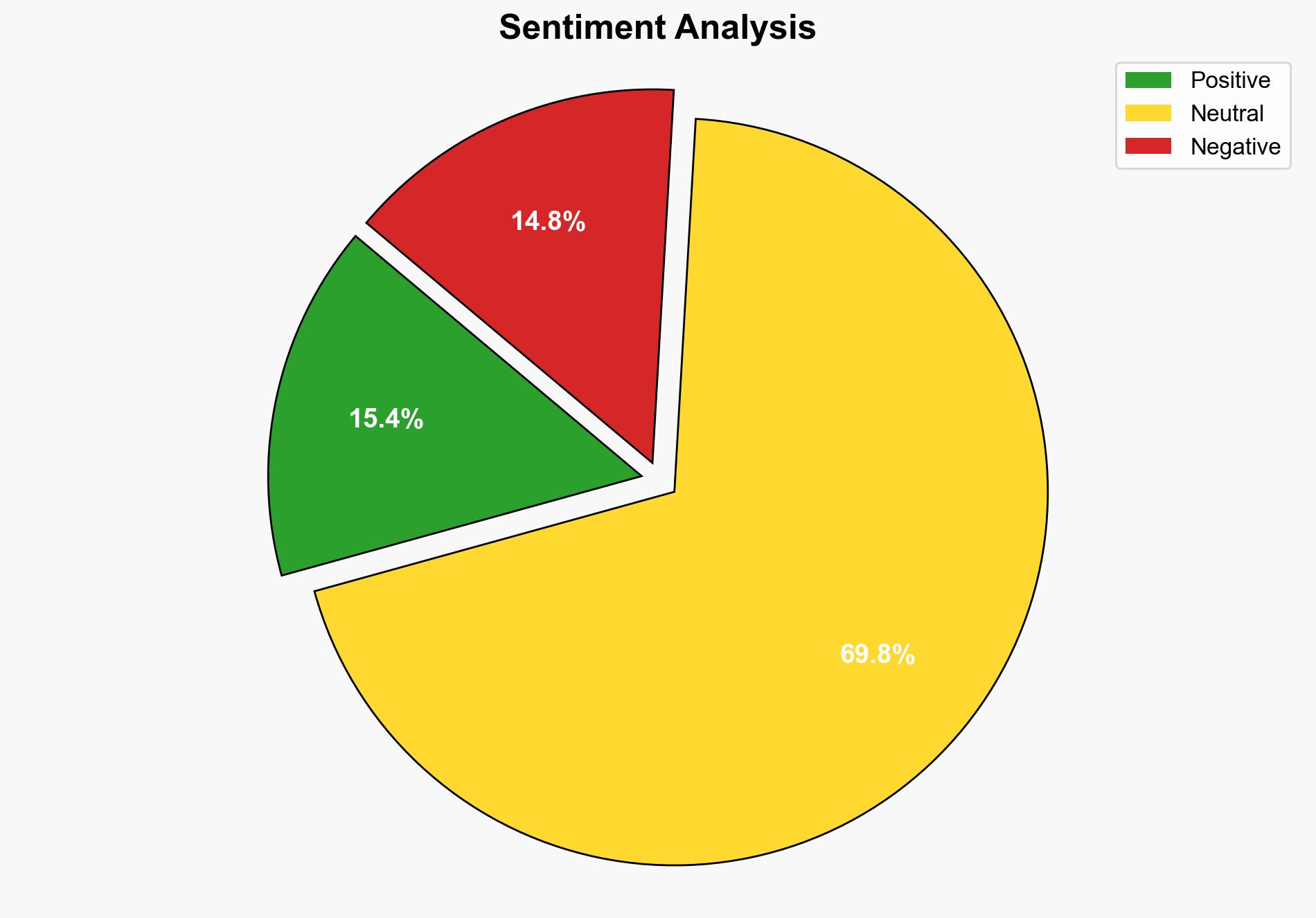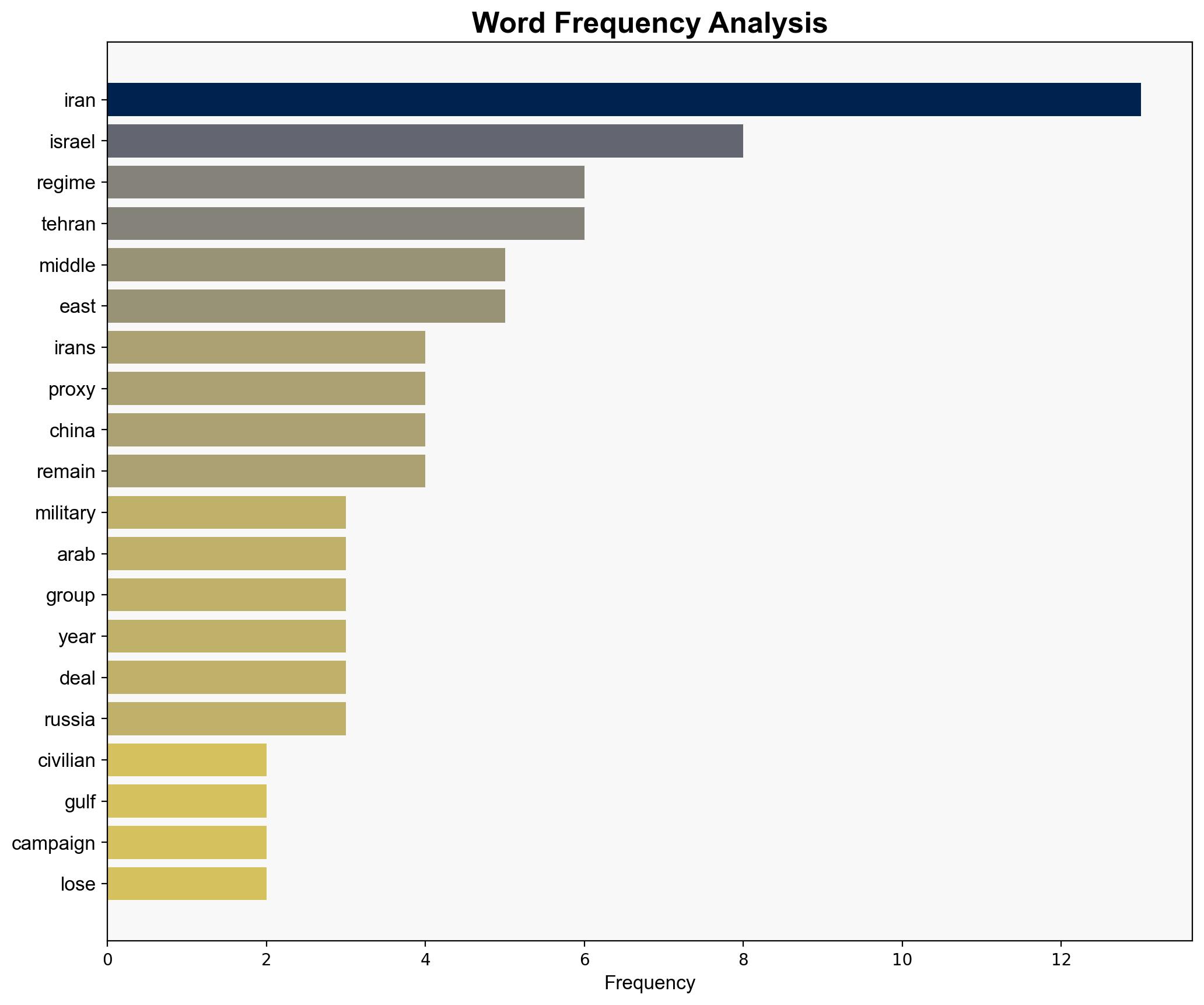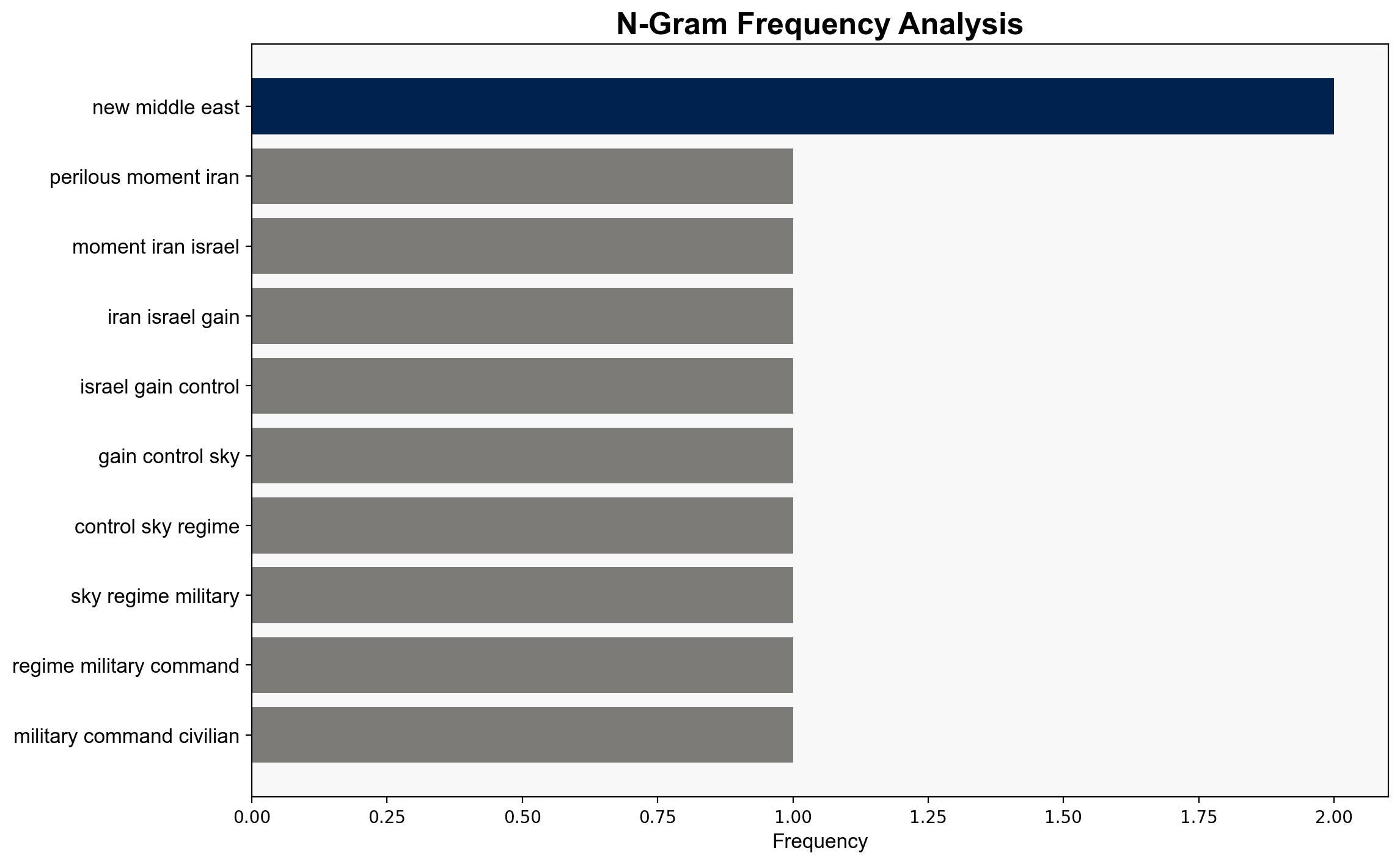How Iran Became Isolated in the Middle East – Time
Published on: 2025-06-19
Intelligence Report: How Iran Became Isolated in the Middle East – Time
1. BLUF (Bottom Line Up Front)
Iran’s strategic approach in the Middle East, characterized by its expansionist policies and reliance on proxy groups, has led to its increasing isolation. The regime’s miscalculations regarding regional alliances and its underestimation of geopolitical shifts have exacerbated its vulnerabilities. Key recommendations include monitoring Iran’s proxy networks and diplomatic engagements to anticipate further regional destabilization.
2. Detailed Analysis
The following structured analytic techniques have been applied to ensure methodological consistency:
ACH 2.0
Iran’s intentions appear to be driven by a desire to consolidate regional influence through proxy groups, such as Hezbollah. However, the strategy has backfired, leading to increased regional opposition and strategic missteps, particularly in its relations with Russia and China.
Indicators Development
Monitoring of digital communications and propaganda reveals a shift in Iran’s narrative, focusing on defensive postures rather than expansion. This may indicate a strategic recalibration in response to regional pressures.
Narrative Pattern Analysis
Iran’s ideological narrative of resistance and regional leadership is losing traction as proxy groups face setbacks and domestic support wanes. This shift could signal a weakening of Iran’s influence across its traditional spheres.
3. Implications and Strategic Risks
Iran’s isolation increases the risk of unilateral actions that could destabilize the region further. The potential for escalation in proxy conflicts, particularly involving Hezbollah and Houthis, poses significant threats to regional stability. Additionally, Iran’s strained relations with major powers like Russia and China could lead to economic and military vulnerabilities.
4. Recommendations and Outlook
- Enhance intelligence gathering on Iran’s proxy networks to preempt potential escalations.
- Encourage diplomatic efforts to integrate Iran into regional dialogues, reducing its reliance on military proxies.
- Scenario Projections:
- Best Case: Iran engages in constructive dialogue, reducing regional tensions.
- Worst Case: Escalation of proxy conflicts leads to broader regional instability.
- Most Likely: Continued isolation with sporadic proxy engagements.
5. Key Individuals and Entities
– Hassan Nasrallah
– Ali Khamenei
– Vladimir Putin
– Xi Jinping
6. Thematic Tags
national security threats, cybersecurity, counter-terrorism, regional focus





